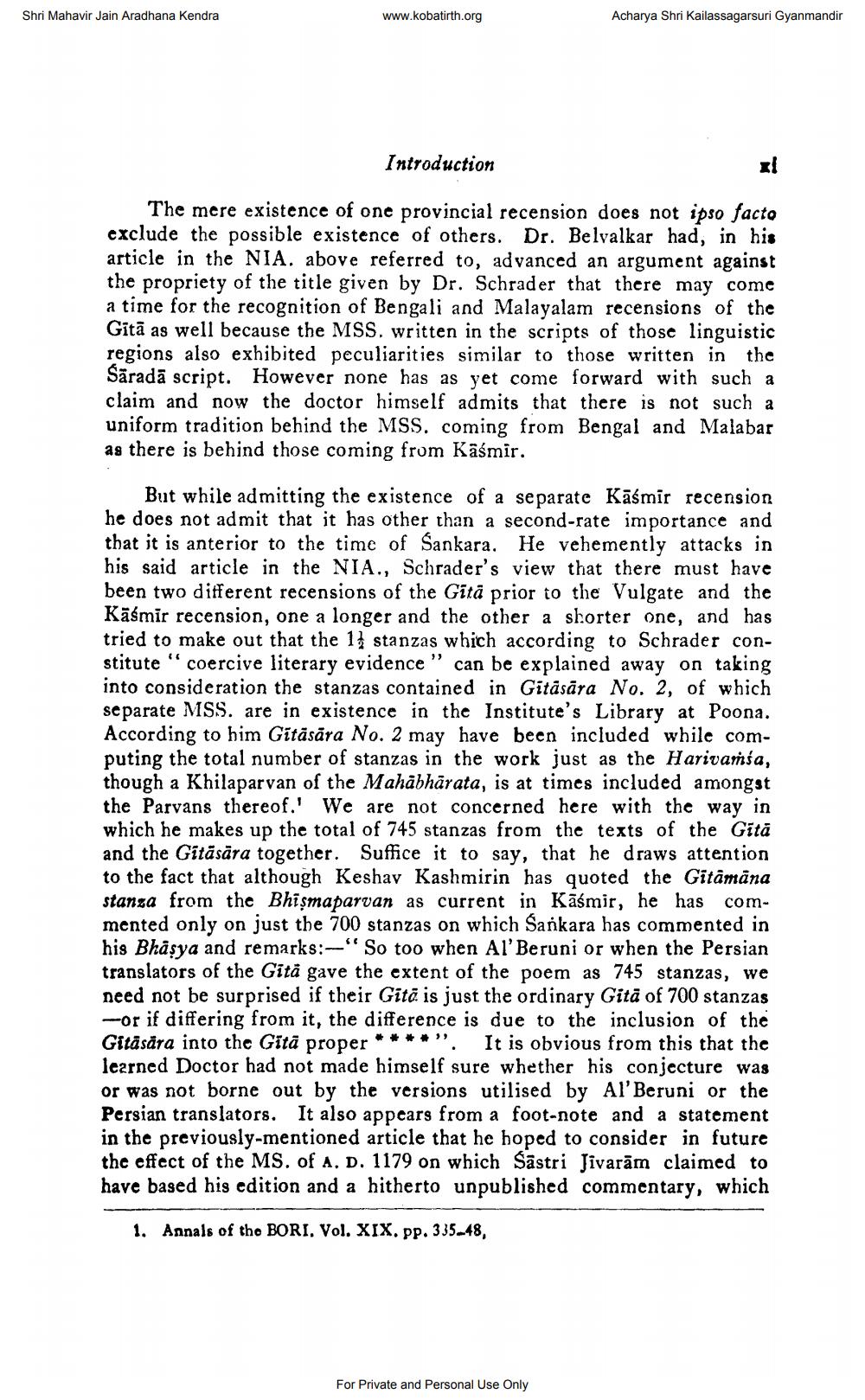________________
Shri Mahavir Jain Aradhana Kendra
www.kobatirth.org
Acharya Shri Kailassagarsuri Gyanmandir
Introduction
The mere existence of one provincial recension does not ipso facto exclude the possible existence of others. Dr. Belvalkar had, in his article in the NIA. above referred to, advanced an argument against the propriety of the title given by Dr. Schrader that there may come a time for the recognition of Bengali and Malayalam recensions of the Gitā as well because the MSS. written in the scripts of those linguistic regions also exhibited peculiarities similar to those written in the Säradā script. However none has as yet come forward with such a claim and now the doctor himself admits that there is not such a uniform tradition behind the MSS. coming from Bengal and Malabar as there is behind those coming from Käśmir.
But while admitting the existence of a separate Kāśmir recension he does not admit that it has other than a second-rate importance and that it is anterior to the time of Sankara. He vehemently attacks in his said article in the NIA., Schrader's view that there must have been two different recensions of the Gītā prior to the Vulgate and the Kāśmir recension, one a longer and the other a shorter one, and has tried to make out that the 11 stanzas which according to Schrader constitute "coercive literary evidence" can be explained away on taking into consideration the stanzas contained in Gitásāra No. 2, of which separate MSS. are in existence in the Institute's Library at Poona. According to him Gītāsāra No. 2 may have been included while computing the total number of stanzas in the work just as the Harivanía, though a Khilaparvan of the Mahabharata, is at times included amongst the Parvans thereof.' We are not concerned here with the way in which he makes up the total of 745 stanzas from the texts of the Gitā and the Gitāsāra together. Suffice it to say, that he draws attention to the fact that although Keshav Kashmirin has quoted the Gitamāna stanza from the Bhişmaparvan as current in Kāśmir, he has commented only on just the 700 stanzas on which Sankara has commented in his Bhäsya and remarks:--"So too when Al' Beruni or when the Persian translators of the Gită gave the extent of the poem as 745 stanzas, we need not be surprised if their Gitä is just the ordinary Gitā of 700 stanzas
-or if differing from it, the difference is due to the inclusion of the Gitāsăra into the Gitā proper ****". It is obvious from this learned Doctor had not made himself sure whether his conjecture was or was not borne out by the versions utilised by Al' Beruni or the Persian translators. It also appears from a foot-note and a statement in the previously-mentioned article that he hoped to consider in future the effect of the MS. of A. D. 1179 on which Sastri Jivarām claimed to have based his edition and a hitherto unpublished commentary, which
1. Annals of the BORI. Vol. XIX. pp. 335.48,
For Private and Personal Use Only




